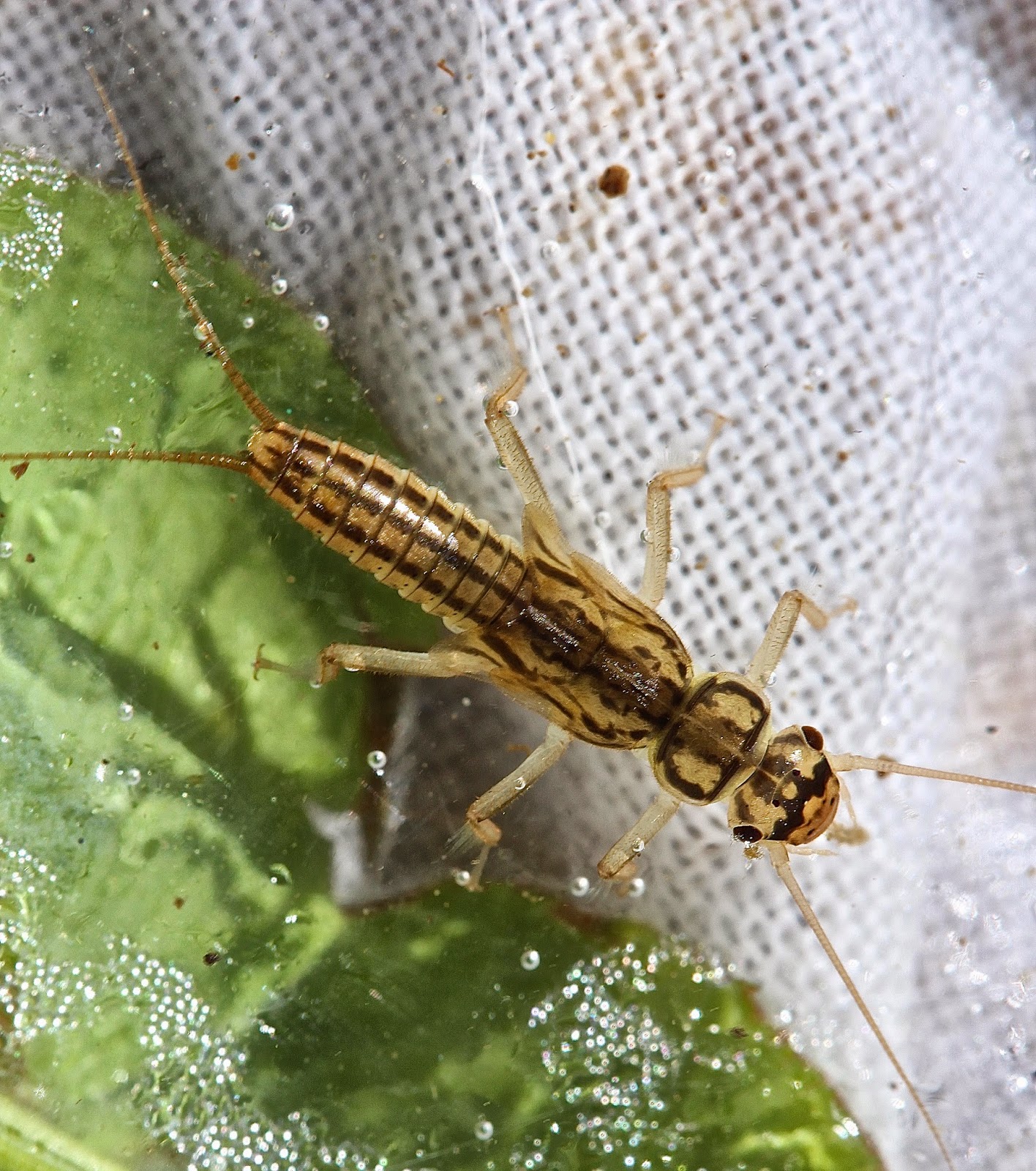They do indeed mature, and this nymph will soon spread its wings and fly off of the stream. The pronggilled mayfly, Paraleptophlebia mollis. The Upper Doyles River is a good place to go if you want to see the "Blue Quills."
__________________
I was anxious to get home today, thinking I had found a new species of Isoperla (Perlodid stonefly). Alas, I was wrong. The nymph in question?
While I was expecting to see -- and did see -- lots of Isoperla montanas (quite soon they'll be flying as "yellow sallies"), this nymph seemed much too light in color to be that species. But Isoperla montana it was. Key features: the dark bars in front of and behind the ecdysial suture on the head; the three dark stripes on the abdominal terga; and the three pairs of dots on each abdominal tergite (lateral to each of the lateral stripes and on either side of the medial stripe).
Still, this nymph was somewhat unique in having very thin bars on either side of the pale spot in the ocellar triangle.
The other I. montana nymphs that I saw were the more common yellow.
I'm increasingly convinced -- and Beaty suggested this to me -- that Isoperla montana is really a "complex" which includes a number of species or sub-species. The variations are simply too many. (Look again at the posting of 1/25 of this year.) Are there dark bars on both sides on the ecdysial suture, or only one side? How thick are those lines? Are they straight or at an angle? DNA analysis will probably solve this one for us. Let's hope someone's working on that.










No comments:
Post a Comment